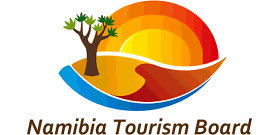 Namibia Launches Visa-on-Arrival Initiative to Boost Tourism
Namibia Launches Visa-on-Arrival Initiative to Boost Tourism
The Namibia Tourism Board (NTB) has unveiled an exciting new initiative aimed at revolutionizing travel to Namibia: the Visa-on-Arrival program. Officially launched on 3rd March 2025, the program will take effect starting 1st April 2025. This strategic move, developed by the Ministry of Home Affairs, Immigration, Safety, and Security (MHAISS), is set to streamline entry processes for international visitors, making travel to Namibia more accessible and appealing.
This initiative is part of Namibia’s broader commitment to enhancing its tourism infrastructure and attracting a greater number of international visitors. By simplifying the visa application process and providing a seamless entry experience, Namibia aims to strengthen its reputation as a top travel destination in Southern Africa and boost its tourism-dependent economy.
How the Visa-on-Arrival Program Works
The Visa-on-Arrival initiative introduces a dual approach, allowing travelers to either apply online for an E-visa or complete the visa process upon arrival at designated ports of entry. The new system is designed to reduce wait times, streamline administrative procedures, and provide a more efficient overall experience for visitors. The program is particularly beneficial for travelers from countries where Namibia does not have diplomatic representation, as they will no longer need to apply for a visa in advance. Instead, they can obtain a visa upon arrival, significantly easing travel barriers.
For travelers choosing to apply online, the process is straightforward:
- Submit an application via the official portal at https://eservices.mhaiss.gov.na prior to arrival.
- Receive the approved E-visa permit, which must be printed and presented upon arrival.
Alternatively, visitors can opt for an in-person Visa-on-Arrival application at Namibia’s major ports of entry, which include Hosea Kutako International Airport, Walvis Bay Airport, and several land border posts. Required documents for this process include a valid passport, completed application form, proof of accommodation, and travel plans, among others.
Visa Fees and Documentation
The visa fees are competitively priced to attract a wide range of international travelers:
- NAD 1,200 (approximately USD 70) for citizens from African Union countries.
- NAD 1,600 (approximately USD 90) for citizens from non-African countries.
These fees will be subject to annual review to ensure competitiveness. Travelers will need to present key documents, including a valid passport with at least six months of validity, travel insurance, confirmation of bookings, and, for those traveling with children, full birth certificates and parental consent letters.
Designated Ports of Entry
The Visa-on-Arrival program will be available at major ports of entry, including Hosea Kutako International Airport, Walvis Bay Harbour, and land border posts such as Katima Mulilo, Ngoma, Oshikango, and Noordoewer. This comprehensive rollout ensures accessibility for travelers arriving by air, sea, or land.
Target Markets and Benefits
The initiative initially targets nationals from 30 countries, including Benin, Ghana, Rwanda, Uganda, Tunisia, and Cameroon. This targeted approach aims to foster cultural exchange and strengthen Namibia’s ties with other African nations while also appealing to international travelers from outside the continent.
The new visa regime is expected to drive significant growth in Namibia’s tourism sector. By eliminating bureaucratic hurdles, the program promotes international arrivals, supporting the country’s hospitality, service, and cultural industries. Namibia’s breathtaking landscapes, including the Namib Desert, Sossusvlei, and Etosha National Park, coupled with its rich cultural heritage, make it an increasingly attractive destination for adventure, nature, and luxury tourism.
